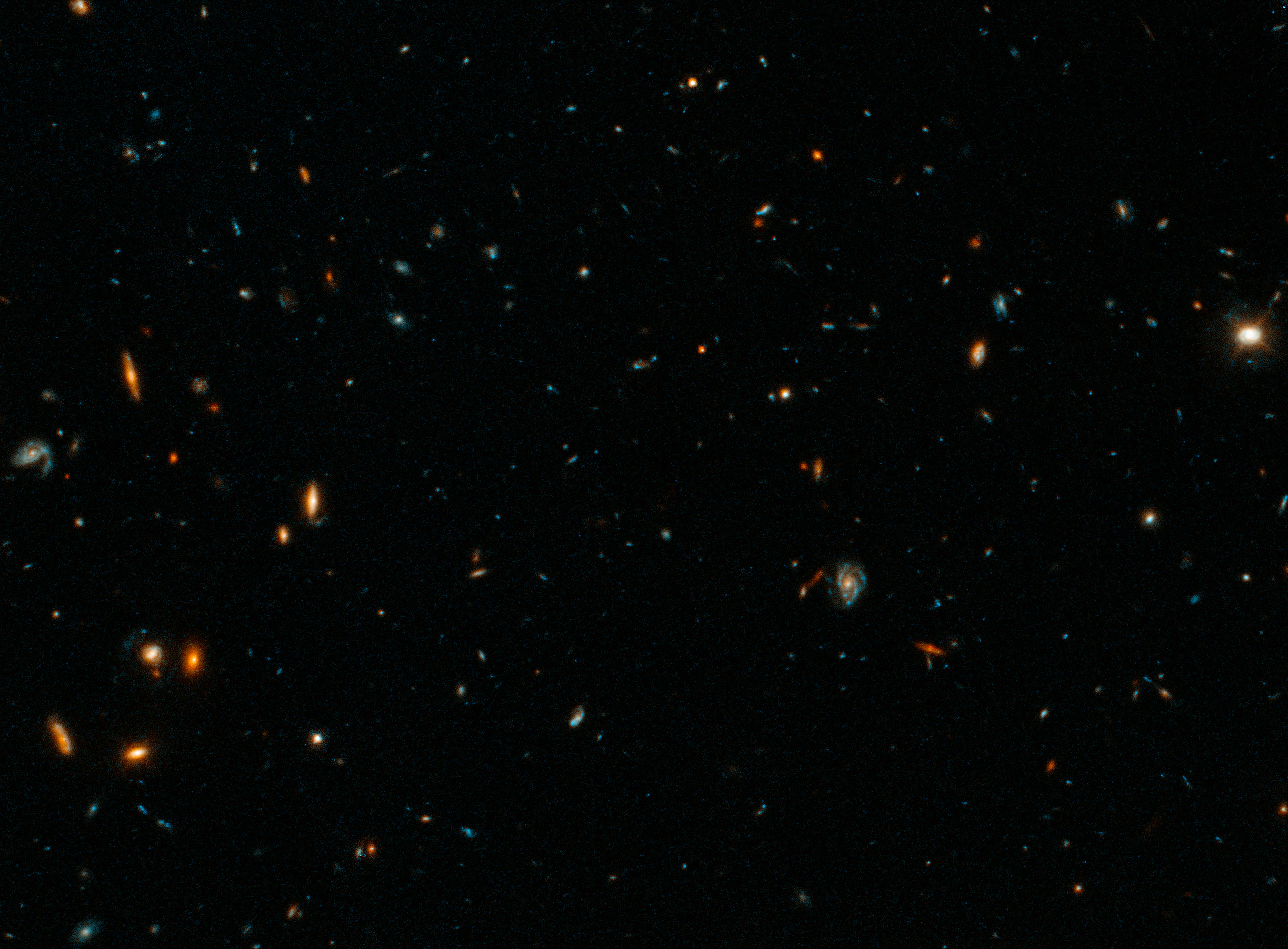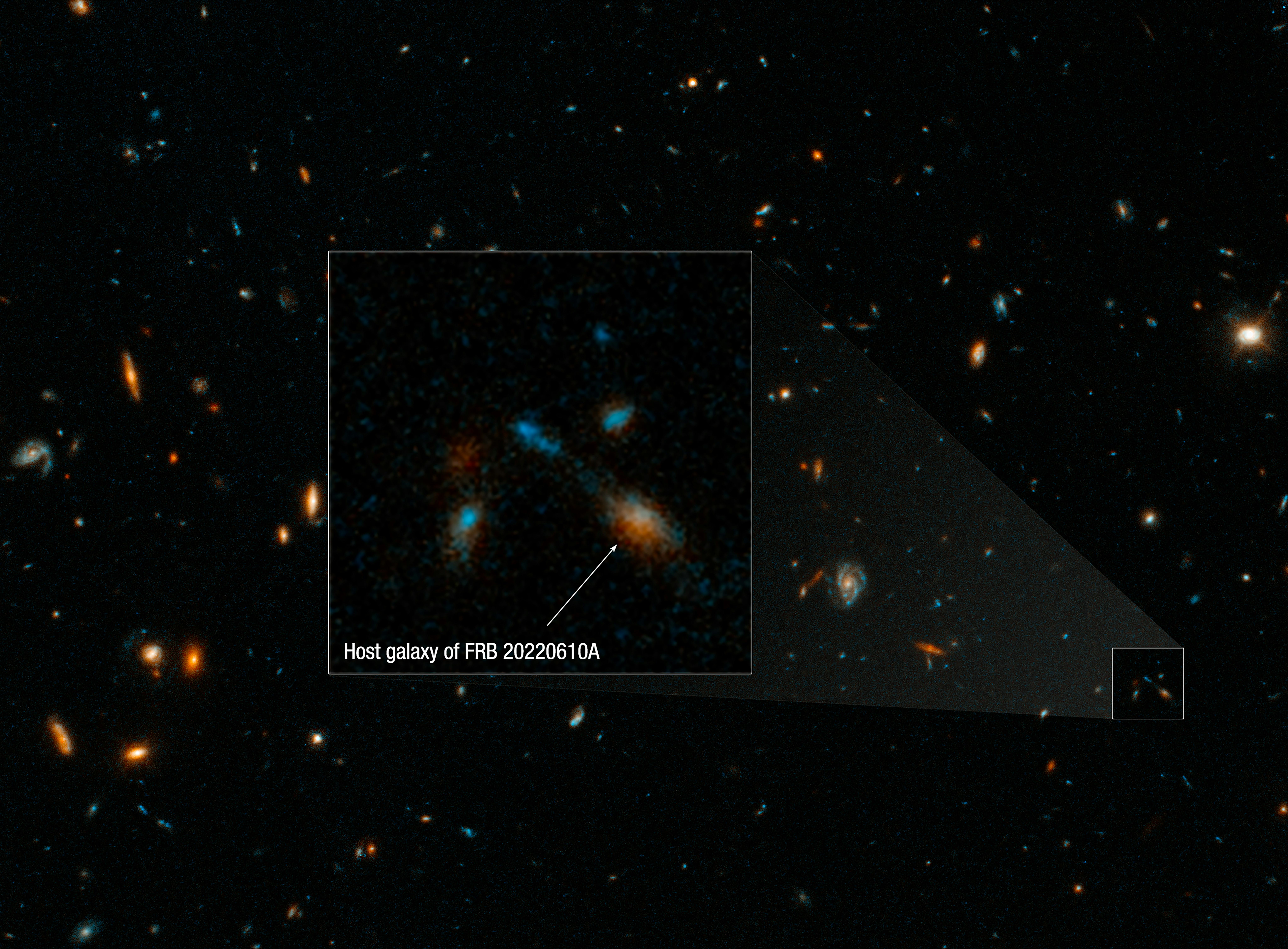
When astronomers traced the most distant — and one of the most powerful — fast radio bursts (FRBs) to its origin, they couldn’t quite render the site with ground-based telescopes. A boost from the Hubble Space Telescope gave them what they wanted, but it was completely unexpected.
They found seven galaxies snuggled together. This septet — huddled closely together and takes up roughly the same amount of real estate as the Milky Way — is unlike any other known FRB origin site.
What are fast radio bursts (FRBs) and why are they important?
FRBs are a relatively new topic in astronomy. Since their discovery in 2008, astronomers have detected thousands of these millisecond-long flashes. There’s still a lot of mystery about what causes these intense and transient eruptions. In their short existence, FRBs can outshine galaxies at the same distance away from Earth. In one burst, they can generate more energy than the Sun emits in one year, according to a statement describing the new research.
Of these thousands of known FRBs, only 50 or so have been traced back to their galaxy of origin. Knowing where they come from helps explain why they exist.
Alexa Gordon, a graduate student at Northwestern University, led a recent study to investigate the source of the farthest and most powerful fast radio burst ever recorded, called FRB 20220610A. The seven galaxies Gordon found were “absolutely astounding,” she said during the “High-Energy Phenomena and their Origins” panel at the 243rd Meeting of the American Astronomical Society in New Orleans on Tuesday.

The Hubble Space Telescope has an advantage over ground-based telescopes: its observational perch, 326 miles above Earth’s surface, is high above the atmosphere.
Hubble’s seven-galaxy revelation is a surprise. Astronomers have found at least two cases where FRBs have originated in galaxy clusters, Gordon tells Inverse. But in these residencies of hundreds or thousands of galaxies, each is at least quite a distance from the other.
But here, it looks like they may soon collide. The team found evidence that the galaxies in this group are trading material.
“They one day [may] be on a path of merging together. The discovery of such a system is rare as they only account for less than 1 percent of all galaxies,” Wen-fai Fong, an associate professor of physics and astronomy at Northwestern and Gordon’s advisor, tells Inverse.
Their closeness might have triggered the FRB, study co-author Yuxin (Vic) Dong tells Inverse. Astronomers suspect that FRBs are triggered by star formation, which crashing galaxies could definitely instigate.
More answers will emerge as the known FRB population grows.







